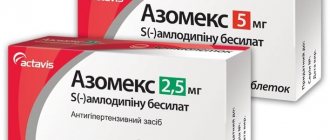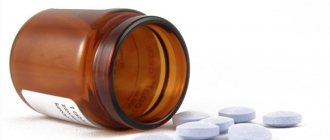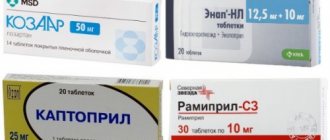Home | About us | Delivery | Advertisers | Login | Registration
- Medicines
- dietary supplementsVitamins
- Categories from A to Z
- Brands from A to Z
- Products from A to Z
- Medical equipment
- beauty
- Child
- Care
- Honey products appointments
- Herbs and herbal teas
- Medical nutrition
- Journey
- Making medicinesStock
Pharmacy online is the best pharmacy in Almaty, delivering medicines to Almaty. An online pharmacy or online pharmacy provides the following types of services: delivery of medicines, medicines to your home. Online pharmacy Almaty or online pharmacy Almaty delivers medicines to your home, as well as home delivery of medicines in Almaty.
my basket
Apteka84.kz is an online pharmacy that offers its customers medicines, medicinal and decorative cosmetics, dietary supplements, vitamins, baby food, intimate products for adults, medical equipment and thousands of other medical and cosmetic products at low prices. All data presented on the Apteka84.kz website is for informational purposes only and is not a substitute for professional medical care. Apteka84.kz strongly recommends that you carefully read the instructions for use contained in each package of medicines and other products. If you currently have any symptoms of the disease, you should seek help from a doctor. You should always tell your doctor or pharmacist about all the medicines you take. If you feel you need further help, please consult your local pharmacist or contact our GP online or by telephone.
© 2021 Pharmacy 84.
Lercanidipine
Drug interactions
When used simultaneously with CYP3A4 inhibitors (including ketoconazole, intraconazole, erythromycin), drug interactions are possible (use combinations with caution).
When used together with CYP3A4 inducers (including antidepressants, rifampicin), the antihypertensive effect of lercanidipine may be reduced.
The hypotensive effect of lercanidipine may be enhanced by consuming grapefruit juice.
Ethanol may potentiate the action of lercanidipine.
When used simultaneously with metoprolol, the bioavailability of lercanidipine is reduced by 50%. This effect may also occur when used concomitantly with other beta-blockers, so dose adjustment of lercanidipine may be required to achieve a therapeutic effect with this combination.
Lercanidipine is metabolized with the participation of the CYP3A4 isoenzyme, therefore inhibitors and inducers of this isoenzyme, when used simultaneously, can affect the metabolism and excretion of lercanidipine. Concomitant use of lercanidipine with CYP3A4 inhibitors (ketoconazole, itraconazole, ritonavir, erythromycin, troleandomycin) is not recommended.
The simultaneous use of cyclosporine and lercanidipine is not recommended, because There is an increase in the concentration of both substances in the blood plasma.
Caution should be exercised when lercanidipine is used concomitantly with other CYP3A4 substrates (terfenadine, astemizole, class III antiarrhythmic drugs, e.g. amiodarone, quinidine).
When lercanidipine 20 mg is co-administered with midazolam, the bioavailability of lercanidipine in elderly patients may increase by approximately 40%.
Lercanidipine should be administered with caution concomitantly with inducers of CYP3A4, such as anticonvulsants (phenytoin, carbamazepine) and rifampicin, as the antihypertensive effect of the drug may be reduced. Regular blood pressure monitoring is necessary.
When lercanidipine was co-administered at a dose of 20 mg in patients chronically taking beta-methyldigoxin, no pharmacokinetic interaction was observed, while healthy volunteers treated with digoxin experienced an average 33% increase in digoxin Cmax after dosing of 20 mg. lercanidipine in the fasted state, with AUC and renal clearance changing slightly. Patients receiving digoxin and lercanidipine concomitantly should be monitored for signs of digoxin toxicity.
The simultaneous use of lercanidipine with cimetidine (up to 800 mg) does not cause significant changes in the concentration of lercanidipine in the blood plasma. At high doses of cimetidine, the bioavailability and antihypertensive effect of lercanidipine may be increased.
With simultaneous use of lercanidipine (20 mg) and simvastatin (40 mg), the AUC value for simvastatin increased by 56%, and the same value for its active metabolite - β-hydroxy acid - by 28%.
By taking drugs at different times of the day (lercanidipine in the morning, simvastatin in the evening) you can avoid unwanted interactions.
The antihypertensive effect may be enhanced by simultaneous administration of grapefruit juice and lercanidipine.
Ethanol may potentiate the antihypertensive effect of lercanidipine.
Drugs containing (Lercanidipine analogues)
Level 4 ATC code matches:
Lacipil
Cordafen
Azomex
Nimodipine
Felodipin
Nifedipine
Farmadipin
Amlotop
Nimotop
Tenox
Nifecard HL
Cordipin
Felodip
Normodipine
Phenigidine
Norvask
Cordaflex
Lerkamen
Corinfar
Vero-Amlodipine
Analogues of lek. products: Zanidip-Recordati , Lercanidipine hydrochloride , Lernikor , Lerkamen 10 and 20 mg, Lercanorm , Coripren (multicomponent product), Enal L Combi (with enalapril ).
Side effects
Side effects from taking Lercanidipine are quite rare.
May appear:
- peripheral edema , flushing of the face;
- palpitations, chest pain;
- angina pectoris , asthenia , headache , tachycardia ;
- myocardial infarction , dizziness , nausea;
- indigestion, vomiting, stomach pain;
- diarrhea , gum hyperplasia;
- increased activity of liver enzymes (reversible), decreased blood pressure ;
- skin rashes, myalgia , polyuria , drowsiness .
Pharmacodynamics and pharmacokinetics
Lercanidipine is a typical calcium channel blocker that reduces the active transport of calcium ions through a semi-permeable membrane into cardiomyocytes of vascular smooth muscle cells. Under the influence of this substance, total peripheral vascular resistance and blood pressure . The hypotensive effect of taking the drug is quite long-lasting and lasts throughout the day. The medicine does not have a negative inotropic effect.
The substance is completely adsorbed from the gastrointestinal tract. The maximum concentration is observed one and a half to three hours after administration. The product is quickly distributed throughout all tissues and organs. The degree of binding to proteins in the blood is up to 98%. With hypoalbunemia , liver and kidney failure, the free fraction tends to increase. Repeated administration of the drug does not lead to its accumulation. Metabolized in the liver using the CYP3A4 , half of the drug taken is excreted through the kidneys in the urine. The half-life is from 7 to 10 hours.
Lercanidipine, instructions for use (Method and dosage)
The tablets are taken orally. In the morning, on an empty stomach. Not earlier than a quarter of an hour before meals. It is not recommended to chew the medicine. Take the tablets with plenty of water.
On average, the daily dosage is 10 mg, but it can be doubled. The daily dose can be increased in the second week of treatment.
For mild to moderate liver and kidney diseases, it is better not to increase the dosage, but to take the minimum active dose of 10 mg.
Pharmacokinetics
In suction
Lercanidipine is completely absorbed after oral administration. The maximum concentration (Cmax) in the blood plasma is reached after 1.5-3 hours and is 3.3 ± 2.09 ng/ml and 7.66 ± 5.90 ng/ml after taking 10 mg and 20 mg of lercanidipine, respectively.
The (+) R- and (-) S-enantiomers of lercanidipine demonstrate a similar pharmacokinetic profile: they have the same time to reach maximum concentration and the same T1/2. Cmax in blood plasma and area under the concentration-time curve (AUC) (-) S-enantiomer
Lercanidipine is on average 1.2 times higher than the (+) R-enantiomer. Interconversion of enantiomers was not observed in in vivo experiments.
During “first pass” through the liver, the absolute bioavailability of lercanidipine when taken orally after meals is about 10%. When taken orally on an empty stomach, the bioavailability is 1/3 of the bioavailability after a meal. When taking lercanidipine orally no later than 2 hours after a high-fat meal, it
bioavailability increases 4 times, so lercanidipine should not be taken after meals. The pharmacokinetics of lercanidipine over the therapeutic dose range is nonlinear. When taking lercanidipine in doses of 10 mg, 20 mg and 40 mg, Cmax in blood plasma was determined in a ratio of 1: 3: 8, respectively, and AUC in a ratio of 1: 4: 18, which
suggests progressive saturation during the “first pass” through the liver. Thus, bioavailability increases with increasing dose taken.
R distribution
Distribution of lercanidipine from blood plasma to tissues and organs occurs quickly. The degree of binding to blood plasma proteins exceeds 98%. In patients with severe renal and liver dysfunction due to a decrease in the concentration of proteins in the blood plasma, the free fraction
lercanidipine may increase.
M e t a b o i s m
Lercanidipine is metabolized with the participation of the CYP3A4 isoenzyme to form inactive metabolites.
Conclusion _
Lercanidipine is excreted primarily through biotransformation. About 50% of the dose taken is excreted by the kidneys, about
50% - through the intestines. The average value of T1/2 is 8-10 hours. There is no accumulation of lercanidipine upon repeated oral administration.
Pharmacokinetics in special groups of patients
The pharmacokinetics of lercanidipine in elderly patients, patients with renal insufficiency (creatinine clearance (CC) more than 30 ml/min) and patients with mild to moderate hepatic impairment are similar to the pharmacokinetics in healthy volunteers.
In patients with renal failure (creatinine clearance less than 30 ml/min) and in patients on hemodialysis, the plasma concentration of lercanidipine increases by approximately 70%.
In patients with moderate to severe hepatic impairment, the systemic bioavailability of lercanidipine is likely to be increased because
Lercanidipine is metabolized primarily in the liver.
Indications for use
Arterial hypertension 1-2 degrees.
Contraindications
- hypersensitivity to lercanidipine, other dihydropyridine derivatives or any component of the drug;
- untreated heart failure;
- unstable angina;
— obstruction of the outflow tract of the left ventricle;
- period within 1 month after myocardial infarction;
- severe liver failure;
- severe renal failure (creatinine clearance less than 30 ml/min);
- pregnancy and breastfeeding;
- use in women of childbearing age who do not use reliable contraception;
- age under 18 years (efficacy and safety have not been established);
- lactose intolerance, lactase deficiency, glucose-galactose malabsorption syndrome;
- simultaneous use with inhibitors of the CYP3A4 isoenzyme (ketoconazole, itraconazole, erythromycin, ritonavir, troleandomycin) (see section
“Interaction with other drugs”);
- simultaneous use with cyclosporine (see section “Interaction with other drugs”);
- simultaneous use with grapefruit juice (see section “Interaction with other drugs”).
Contraindications
The substance is contraindicated:
- for chronic heart failure in the stage of decompensation;
- for aortic stenosis and unstable angina ;
- if less than a month ago the patient suffered a myocardial infarction ;
- with severe liver failure;
- if the CK reaches less than 10 ml per minute;
- with galactosemia ;
- patients with lactose intolerance, with malabsorption syndrome of galactose , glucose ;
- pregnant women;
- children and teenagers;
- when breastfeeding;
- patients with allergies to the components of the drug and other dihydropyridine derivatives.



